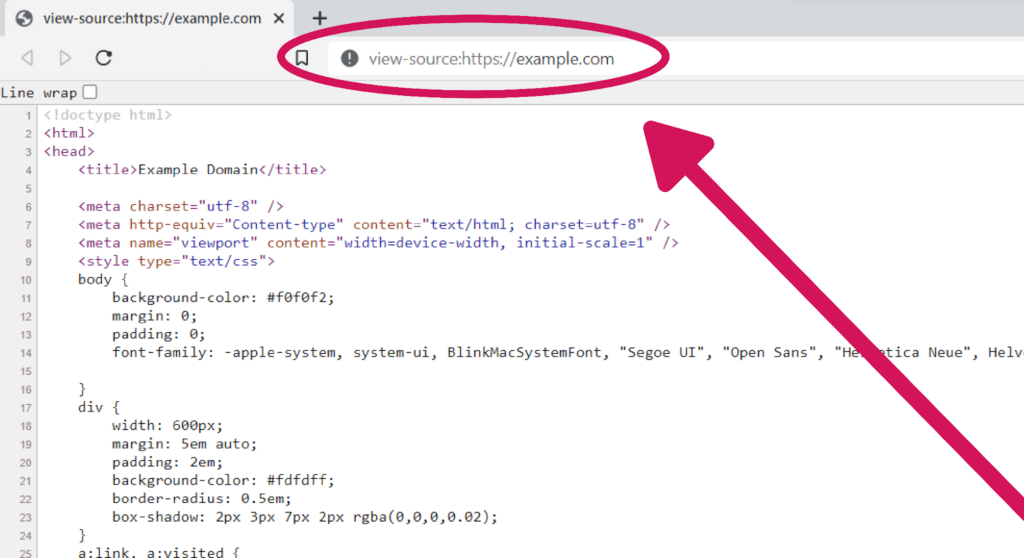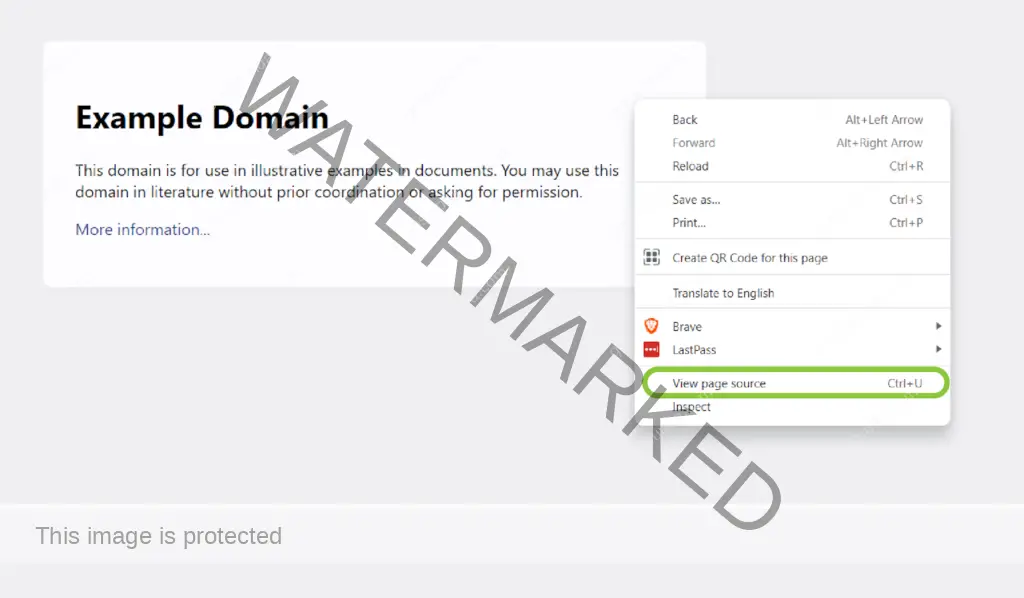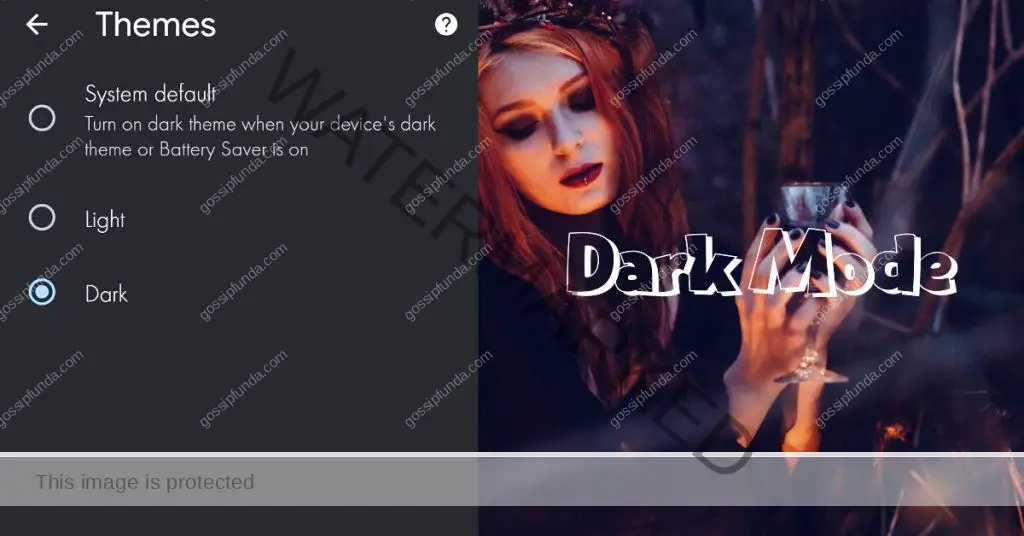As the Internet continues to evolve and expand, web development has become an increasingly complex and vital field. With millions of websites and web applications being created every day, web developers must have a deep understanding of the underlying technologies, including HTML, CSS, and JavaScript. One tool that can greatly assist in this understanding is the Google Chrome browser’s “view-source:chrome://” feature.
A URL prefix called “view-source:chrome://” gives users access to a webpage’s source code. When used in conjunction with the URL of a web page, the browser displays the raw HTML, CSS, and JavaScript code that makes up the page, instead of rendering it. This allows developers to see the underlying structure and elements of the page, as well as any JavaScript and CSS styles that are used to create its appearance and functionality.
The ability to view source code has numerous benefits for web developers. They can learn from others, troubleshoot problems, and adapt websites to their needs thanks to their ability to help them comprehend how a web page is put up. Furthermore, it can significantly increase web developers’ ability to work together. It can help create websites and applications that are safer, more accessible, and well-optimized.
In this article, we will delve deeper into “view-source:chrome://” and explore its various uses, benefits, and limitations. From accessing source code to debugging and customizing web pages, we will cover everything you need to know about this powerful tool.
Understanding the Structure of a Web Page: An Overview of HTML, CSS, and JavaScript
With millions of websites and web applications being developed every day, web development is a complex and quickly developing area. The underlying technologies, like HTML, CSS, and JavaScript, must be thoroughly understood by developers in order to build these websites and applications. The “view-source:chrome://” function of the Google Chrome browser is a useful tool for aiding with this comprehension.
Developers may inspect a web page’s core structure thanks to “view-source:chrome:/,” which is one of its main advantages. The raw HTML, CSS, and JavaScript code that makes up a web page is displayed by the browser rather than being rendered when the URL of the page is used. The construction of a web page and the interactions between the different elements, styles, and scripts can both be better understood by developers by studying this source code.
Using “view-source:chrome://” to Understand the Structure of a Web Page
Developers can better grasp the HTML, CSS, and JavaScript that make up a web page by looking at the source code. To read the HTML code of a page and investigate the structure of the page, including the various tags and elements used to generate it, a developer might use “view-source:chrome://” as an example. Similarly to this, a developer can read the CSS code of a page with “view-source:chrome://”. A developer can also check the styles used for both individual elements and the page’s overall layout and appearance. Finally, a developer might use “view-source:chrome://” to view the JavaScript code of a page and examine the interaction.
How to Access the Source Code of a Web Page using “view-source:chrome://”

Accessing a web page’s source code might be a helpful resource whether you are a web developer or just curious about the underlying structure of a web page. Instead of only viewing the displayed version of a web page, you may view the original HTML, CSS, and JavaScript code that makes up the page with the use of Google Chrome’s “view-source:chrome://” function.
Let’s go over how to use “view-source:chrome://” in Google Chrome to inspect a web page’s source code:
Step 1: Open Google Chrome
Open Google Chrome, the browser you will use to access the source code of a web page.
Step 2: Open the Web Page
Navigate to the web page whose source code you want to read. This can be any website or web page that is currently accessible through your browser.
Step 3: Access the URL
In the browser’s address box, type “view-source:”. Then enter the URL of the web page whose source code you want to view. You might use “view-source:https://www.example.com” to read the source code of “https://www.example.com,” for instance.
Step 4: View the Source Code
After entering the URL, press enter. The source code of the web page will be displayed in a new tab of the browser. The source code will be displayed in a text editor-like interface, with the HTML, CSS, and JavaScript code of the page displayed in different sections.
Step 5: Inspect the Code
Now that the code has been exposed, you may examine the various tags, elements, styles, and scripts that were used to build the website by navigating through the various sections. To find particular code parts or styles, you can also use the text editor’s search function.
Debugging Web Pages with “view-source:chrome://”
As a web developer, debugging your code can be difficult especially if the issue is not immediately apparent. Fortunately, Google Chrome’s “view-source:chrome://” capability is an effective tool for aiding with web page debugging. With the help of this capability, you can examine a web page’s source code. You can even examine all of its components, and any potential problems or faults. Let’s look at how to debug web pages in Google Chrome with “view-source:chrome://”.
Step 1: Open Google Chrome
Open Google Chrome, the browser you will use to debug your web page.
Step 2: Open the Web Page
Go to the website that you wish to debug. Any website or web page that is currently viewable through your browser qualifies.
Step 3: Access the URL
Enter view-source: and the URL of the webpage you wish to debug in your browser’s address bar. You would enter view-source:https://www.example.com, for instance, if you wanted to debug https://www.example.com.
Step 4: Inspect the Code
The source code of the website will be seen in a new tab of the browser once you hit Enter. The HTML, CSS, and JavaScript of the page will be shown in distinct portions of the source code. This will be presented in a text editor-like interface.
Step 5: Identify Issues and Errors
Use your text editor’s search functionality to search for specific element styles or scripts in your code. You can also inspect page elements using your browser’s built-in developer tools. By examining the source code, you can identify any problems or errors that may exist. These could be Syntax errors, Broken links, or missing elements.
Step 6: Fix the Issues
You may then go to the relevant files and make the necessary corrections after determining the flaws in the code. To check if the problem has been fixed, make modifications to the HTML, CSS, and JavaScript code. Later, test the updated versions in the browser.
Step 7: Repeat the Process
Repeat the process of accessing the source code, inspecting the code, identifying issues, and fixing the issues. Perform these steps until your web page is free of errors and functioning as desired.
Learning from Others through Source Code Inspection with “view-source:chrome://”
As a web developer, it can be beneficial to learn from others and see how they approach coding challenges. One effective way of doing this is by inspecting the source code of websites that you admire. The “view-source:chrome://” feature in Google Chrome makes it simple to view and inspect the source code of any website.
Inspecting the source code of a website provides valuable insight into the HTML, CSS, and JavaScript that make up the website. You can discover information about the HTML structure, CSS styles, and JavaScript scripts utilized by looking at the code. Best practices can be shown in instances of semantic HTML, modular CSS, and tidy, well-organized JavaScript.
Examining the source code of other websites can help you understand how various web developers address coding difficulties in addition to teaching you best practices. You can pick up fresh approaches and strategies that you can use on your own web development tasks.
It’s crucial to understand that looking at a website’s source code is not the same as stealing or copying the code of another person. Instead, it is an opportunity to develop your own abilities and learn from others. You can see how others have addressed issues by looking at the source code. Through this, you can utilize that information to advance your own coding abilities.
Customizing Web Pages with “view-source:chrome://” in Google Chrome
As a web developer, you might occasionally need to test out a new concept. You might even need to solve a bug by making fast modifications to a website’s source code. Google Chrome’s “view-source:chrome://” function can help you easily access and edit any web page’s source code.
With this feature, you can inspect the HTML, CSS, and JavaScript that make up a website and make changes to the code. You can experiment without harming the original website. This is because the modifications you make only impact the webpage that is currently open in your browser.
Here are some common scenarios where customizing web pages with “view-source:chrome://” can be useful:
Debugging:
If you’re experiencing an issue with a website, viewing the source code and making changes can help you isolate the problem and find a solution.
Testing:
You may easily test your modifications on an operational website without impacting the original code. This can also be done if you’re working on a new feature or want to try out a fresh look.
Personalization:
If you want to change the appearance of a website for your own personal use, you can make modifications to the CSS to create a custom look.
Simply enter “view-source:chrome://” in the address bar followed by the URL of the page you wish to examine to view the source code of a webpage in Google Chrome. The source code will appear in a new tab that will open. The code can then be modified, saved, and the page can be refreshed to view the changes.
It’s crucial to remember that any modifications you make to the source code won’t last past the current browsing session. You must make a copy of the code and host it on your own website if you want to make modifications that are more lasting.
How “view-source:chrome://” Differs from Browser Development Tools

As a web developer, you have a number of alternatives for inspecting and modifying the code of a web page. Two of these options are “view-source:chrome://” and browser development tools. While they both serve similar purposes, they have some key differences that make them suited to different tasks.
“view-source:chrome://” is a simple way to view the source code of a web page. The HTML, CSS, and JavaScript that make up the page can be seen when you access the source code in this way, but you are unable to modify the code. This approach works best for rapid inspections if all you want to do is read the page’s source code without making any changes.
On the other hand, browser development tools provide a much more comprehensive and interactive environment for inspecting and modifying web pages. If you right-click on a page in Google Chrome, for instance, and choose “Inspect,” you can access the developer tools. The dev tools offer a variety of instruments for reviewing and altering a web page’s code, including the capacity to:
Debug JavaScript:
Debugging is a crucial part of web development, and the dev tools provide several tools to help you debug your JavaScript code. Breakpoints can be defined, code can be stepped through, and variable values can be seen in real-time.
Modify HTML and CSS:
With the dev tools, you can make live changes to the HTML and CSS of a web page. Doing this, allows you to quickly see the results of your changes without having to save and refresh the page.
Inspect layout and performance:
The ability to see box models, view page layout, and evaluate code performance are just a few of the capabilities available in Developer Tools to examine the design and functionality of web pages.
Network inspector:
A web page can make network requests, and you can observe the specifics of each request, including the URL, response time, and status code.
The Role of “view-source:chrome://” in Modern Web Development

Web development has come a long way since the early days of the internet. The tools available to developers have become more powerful and sophisticated, allowing them to build more complex and dynamic websites than ever before. Nevertheless, “view-source:chrome://” is still a valuable tool for web developers in spite of these advancements.
One of the primary roles of “view-source:chrome://” in modern web development is as a learning tool. It’s crucial for web developers to constantly learn new things and advance their knowledge. You can learn about new methods, best practices, and design patterns by looking at the source code of well-designed and well-built websites. Applying this knowledge to your own work will enable you to create websites that are both better and more efficient.
The debugging function of “view-source:chrome://” is another use for it. Seeing a web page’s source code is a quick and simple approach to performing debugging, which is a crucial component of web development. When trying to figure out why a page isn’t functioning the way it should or to identify a code problem, this can be helpful.
In addition to these uses, “view-source:chrome://” also plays a role in customizing web pages. While not as advanced as browser development tools, “view-source:chrome://” can nevertheless be used to make minor alterations to a web page’s source code. This tool can be utilized, for instance, to change a page’s HTML structure or to add unique CSS styles.
Finally, “view-source:chrome://” is a valuable tool for security. You can rapidly determine whether any malicious scripts have been introduced to a web page by looking at the source code of the page. This might assist you in defending against malicious attacks on your computer and personal data.
Best Practices for Using “view-source:chrome://”
“view-source:chrome://” is a powerful tool for web developers, but like any tool, it should be used with care. Here are some best practices for using “view-source:chrome://” effectively and efficiently.
Use it as a learning tool:
One of the primary uses of “view-source:chrome://” is as a learning tool. You can learn about new methods, best practises, and design patterns by looking at the source code of websites that have been skillfully designed and developed. It’s crucial to keep in mind, though, that just because you can read the source code doesn’t indicate that it represents the ideal or only approach to completing a given task.
Be respectful:
Always remember that the source code of a website belongs to the website owner. You should not copy modify or distribute the code without their permission. Please also note that some websites may contain sensitive information such as passwords or other confidential data that should not be displayed Shared or used without permission.
Keep it simple:
It’s recommended to utilize the straightforward tool “view-source:chrome://” for straightforward jobs. Consider employing browser development tools, such as the Chrome DevTools, which offer more comprehensive features and capabilities, if you need to carry out more complicated troubleshooting or modifying operations.
Use it in conjunction with other tools:
There are numerous tools available to web developers, including “view-source:chrome://”. When working on a web development project, think about using “view-source:chrome://” along with other tools. The tools could be code editors, version control systems, and issue trackers. This is to make sure that your work is structured, effective, and efficient.
Be mindful of security:
As with any tool that allows you to view or modify the source code of a web page, “view-source:chrome://” has the potential to expose security vulnerabilities. When using this program, be aware of the security consequences of your activities at all times and take precautions to safeguard your computer and private data from threats.
Potential Limitations and Challenges of “view-source:chrome://”
Although “view-source:chrome://” is a powerful tool for web developers, it is not without its drawbacks and difficulties. In order to use the tool properly and steer clear of typical mistakes, it’s crucial to understand these constraints and difficulties.
Limited functionality:
While “view-source:chrome://” is a helpful tool for looking at a web page’s source code, it is limited in comparison to more advanced development tools. It does not, for instance, offer any debugging or performance improvement options. You will require more tools if you have to carry out more difficult jobs.
Inaccurate representation of code:
The source code displayed by “view-source:chrome://” might not be an exact representation of the code that the browser actually runs. The code, for instance, can be hard to read because it has been minified or obfuscated. The source code view can also not show dynamic stuff produced by JavaScript.
No version control:
It could be challenging to track down source code changes that have been made over time. This is due to the lack of version control tools in “view-source:chrome://”. Utilize a version control system to keep track of your modifications if you are working on a sizable development project.
Security risks:
A web page’s source code may contain sensitive information or security issues like hard-coded passwords. Consider how your actions may impact security when using “view-source:chrome://”. Take additional security measures to protect your computer and sensitive information from dangerous invasions.
Limited to specific browsers:
If you are using a different browser, you will need to use a different tool or method. Because “view-source:chrome://” is particular for Google Chrome in order to view the source code of a web page.
Essential learning tool:
Examining the source code of a web page is a crucial part of the learning process for web developers. Developers can obtain a deeper understanding of how a website was created by looking at the source code as well as discovering new methods and best practices that they can use in their own work.
Debugging and optimization:
Despite its limited functionality, “view-source:chrome://” is still an important tool for debugging and optimizing web pages. By examining the source code, developers can identify and fix issues that are affecting the performance or functionality of a website.
Access to source code:
Developers may easily see any web page’s source code with “view-source:chrome:/,” which enables them to see how various websites are built and gain knowledge from the code that powers them. Developers who are just starting out or who are working on a new project and seeking inspiration will find this to be especially helpful.
Integration with other tools:
Despite the fact that “view-source:chrome://” is not as strong as other development tools, it can be used in concert with them to offer a more thorough development experience. Developers can, for instance, use “view-source:chrome://” to locate problems before switching to a more advanced tool to carry out thorough debugging or optimization.
In conclusion, “view-source:chrome://” remains an important tool for web developers, and its importance will only continue to grow as the field of web development evolves. Whether you are a seasoned professional or a beginner, “view-source:chrome://” is an essential tool that you should have in your toolkit.
Conclusion
In a constantly evolving field like web development, it is easy to get caught up in the latest trends and technologies. However, some tools and techniques remain essential and enduring, and “view-source:chrome://” is one of them. Despite its limitations and challenges, “view-source:chrome://” continues to be an indispensable tool for web developers.
As a content writer, I specialize in creating compelling, engaging, and informative written content for various platforms and audiences. My background in research, writing, and editing allows me to craft SEO-friendly content that resonates with readers and drives results. I have experience in creating a wide range of content such as blog posts, website copy, product descriptions, and email marketing campaigns. I am dedicated to producing high-quality content that is tailored to the unique needs and goals of my clients and I am always looking for new challenges and opportunities to grow as a writer.


